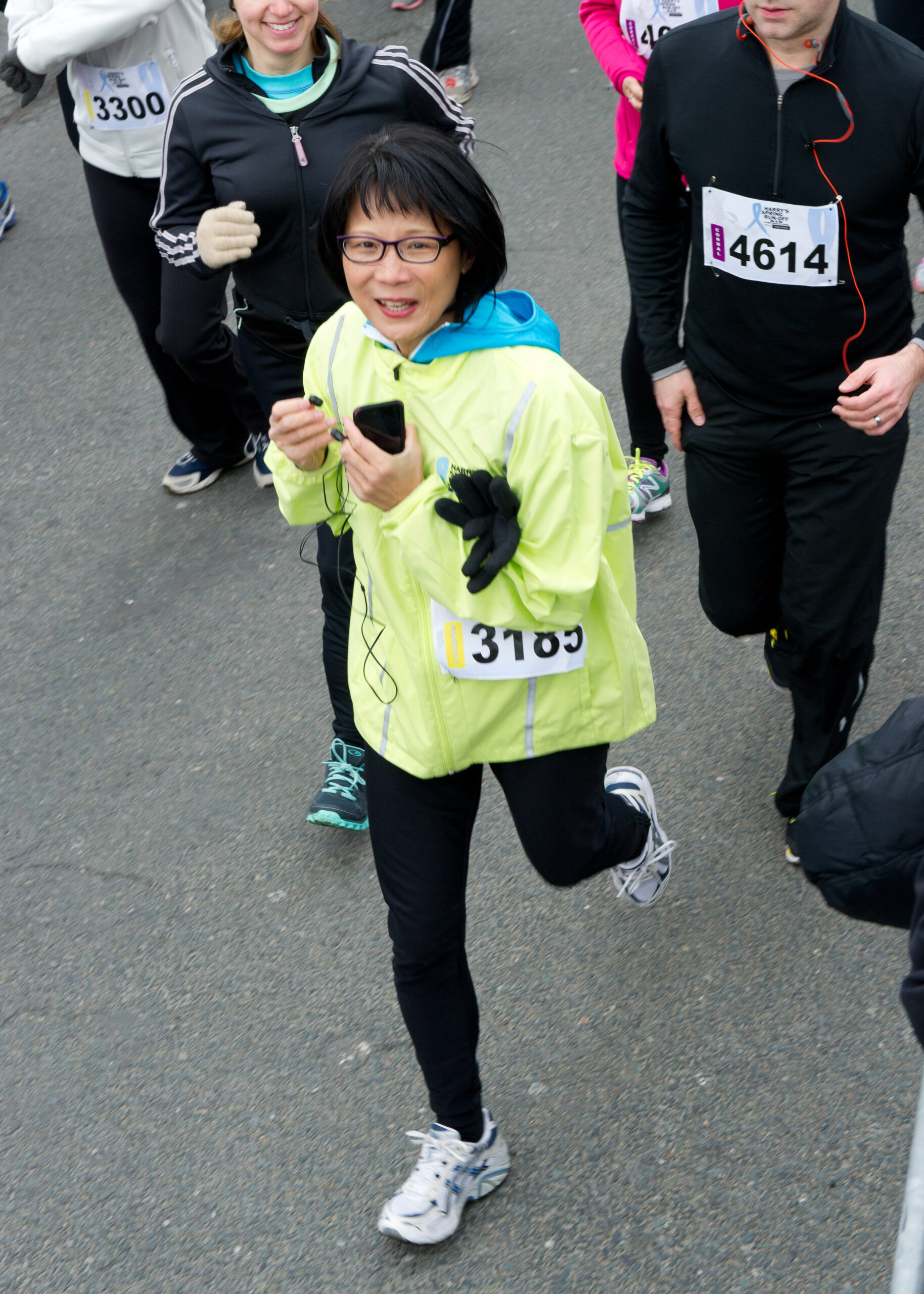
By Coach Colin, High Park Rogue Runners
Hills, hills, hills.
It’s difficult to think of the Race Roster Spring Run Off and not think of hills. In fact, both the 5k and 8k race have built their reputation around the steep climb up Spring Road just before the finish line. You could probably count the number of feet of level ground in this race on just one hand. So, how do you possibly prepare for this?
You might find it surprising, but tackling this race doesn’t require an overhaul of your training. Just a few small shifts can make a significant difference in how you perform come race day:
Step 1: Get to race day healthy!
When selecting or designing a training program, make sure you’re choosing the one that gives you the greatest odds of getting to race day in one piece! Try to avoid programs with drastic jumps in number of days you run, weekly mileage, or intensity.
Cold weather can make it tough to stay motivated, and the tendency is for people to try to make up for lost time by cramming as much training into a short time frame as possible. Unfortunately, this greatly increases your risk of injuries. Instead, consider finding a group of people to run with to keep you accountable to your training. The city is filled with run crews, clubs, and stores with training groups that cater to all levels of runners. The best way to stay healthy is to enjoy the process!
Step 2: Add a bit of specificity to your training.
If you want to get better at hills, you’re going to have to run some hills. This doesn’t mean you have to go out and find the steepest hill and run it until you pass out. Simply changing your route to include a few hills once a week, or adding a few hill sprints to the end of one of your weekly runs can make a big difference.
Hill sprints: Find a hill with a moderate slope, and run for 5 to 10 seconds at about 90% effort up that hill. Stop, walk down the hill, let your heart rate lower, then do it again. 4 to 6 hill repeats once a week is a great way for you to increase your strength on hills, even if you’re a more seasoned runner. If you’re new to running, I would wait until you have a solid base (minimum of four weeks of injury-free, consistent running) before adding them to your training.
For veteran runners looking to add a few more hills to your training, consider some longer hill repeats. Set aside one run day as a hill workout. Start with an easy 10-minute warm up, then find a hill that’s about 300m long (the finishing hill of the race on Spring Road in High Park is the perfect option when it’s clear of ice and snow). You can start with a couple hill sprints, then follow it up by running the entire hill at an 80% effort. I always prefer to add a flat stretch of about 50m after the hill to continue the hard effort so that I get used to running through the hill, not just up it – remember, that finish line isn’t directly at the top of the hill, you still have about 100m to go once you’re up!
If this is your first time adding hill workouts to your training, start with a lower number of reps – two or three – then add one rep each week. Again, it’s always best to get a solid base of fitness before adding these to your training, so consider adding them to your training about four weeks in if all things have gone smoothly.
I usually recommend cutting the hill workouts out of your training about two weeks out from race day so you can focus on recovering a bit more. Switch to flatter routes with some rolling hills in those last two weeks. Finish each hill workout with a 10-minute easy cool down.
Step 3: Focus on your form.
If you want to make the hills a little bit easier, you can do a few things to focus on your form while running. Drive your knees and pump your arms. When your legs start to tire, really focus on keeping those arms pumping. You’ll be surprised how effective this can be when you start to feel like you can’t lift your knees anymore!
Keep your torso upright and your eyes straightforward. The tendency is for most people to look up to the crest of the hill to keep them moving forward, but if you’re looking too far up it can shift your body weight too far back, which adds more effort to running up the hill. I find staring at the crest of the hill can also become demoralizing when you’re tiring, so keep those eyes straight ahead and up a few feet and just focus on staying calm, maintaining good form, and doing your best. Instinctively, when we start to tire we slump our shoulders. It’s important to keep ourselves from doing this though, as it makes it harder to get enough oxygen to keep working hard. Keep that torso upright even when you start to fatigue!
If nothing else, focusing on your form while running up the hill can provide a welcome distraction from the discomfort of the hill!






